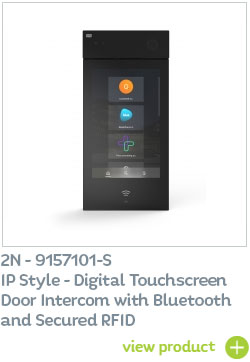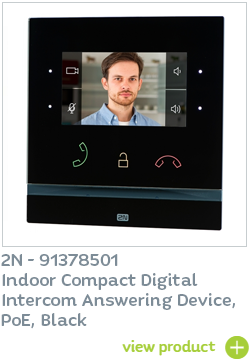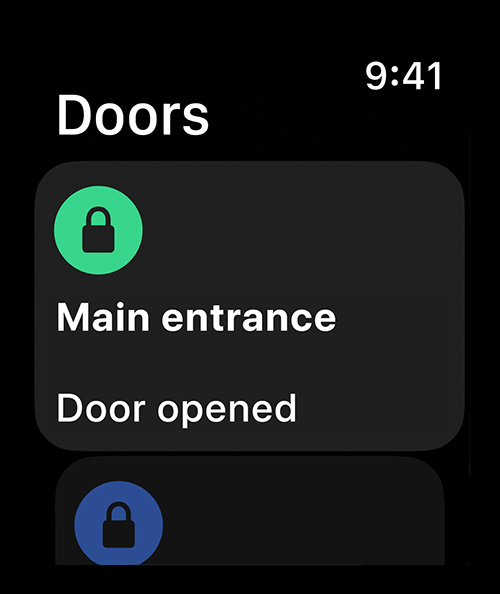Unlock Doors with Just a Tap: The My2N Access Control App for Apple Watch
In an era where seamless integration, convenience, and security define modern living, 2N’s My2N access control app for Apple Watch introduces a powerful new way to access your home, office, or facility - all from your wrist.
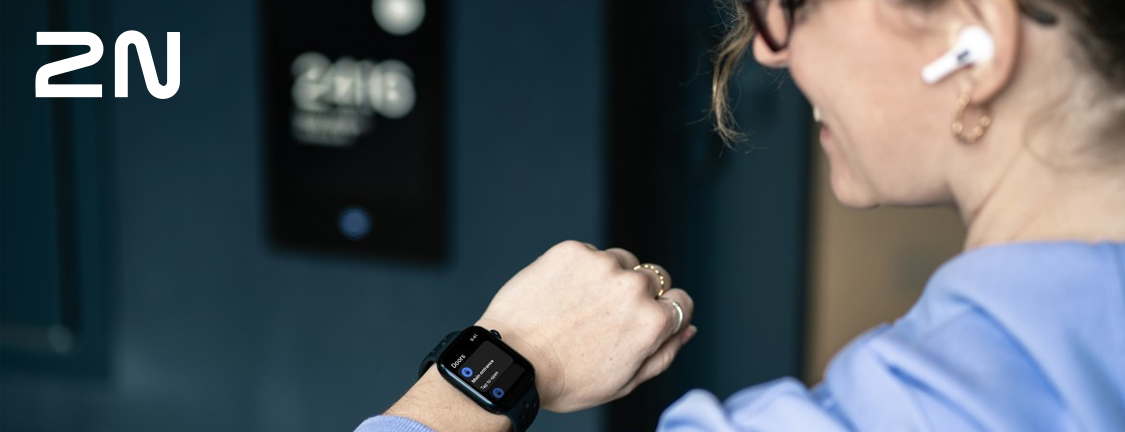
This innovative app extension brings a new level of mobility and freedom to 2N’s market-leading access control ecosystem. Designed with simplicity, reliability, and user experience at its core, it empowers users to unlock doors effortlessly using only their Apple Watch. Whether you’re heading out for a run, arriving at your workplace with your hands full, or simply preferring to leave your smartphone behind, the My2N Apple Watch integration gives you instant, secure access with just one tap.
Imagine going for a jog or a quick coffee run without carrying your phone. With the My2N access control app on your Apple Watch, you can leave your phone behind and still unlock doors effortlessly.
Smart Access Redefined: Convenience on Your Wrist
For years, mobile access control has been redefining how people interact with their built environment. The My2N access control app is already trusted by thousands of users globally for its intuitive and secure approach to managing access credentials digitally. Now, by extending those capabilities to Apple Watch (Watch OS 11 and higher), 2N has taken that convenience one step further — enabling true phone-free entry that blends effortlessly into modern lifestyles.
Leave Your Phone Behind
One of the biggest appeals of the My2N app for Apple Watch is freedom. Users can now unlock their doors without the need to carry a smartphone, making it perfect for those moments when convenience and mobility matter most. Because the app operates through Bluetooth connectivity, your watch communicates directly with the door reader — even if your phone is out of range.
All access rights are securely synchronised and stored, so you always have the most up-to-date permissions available.
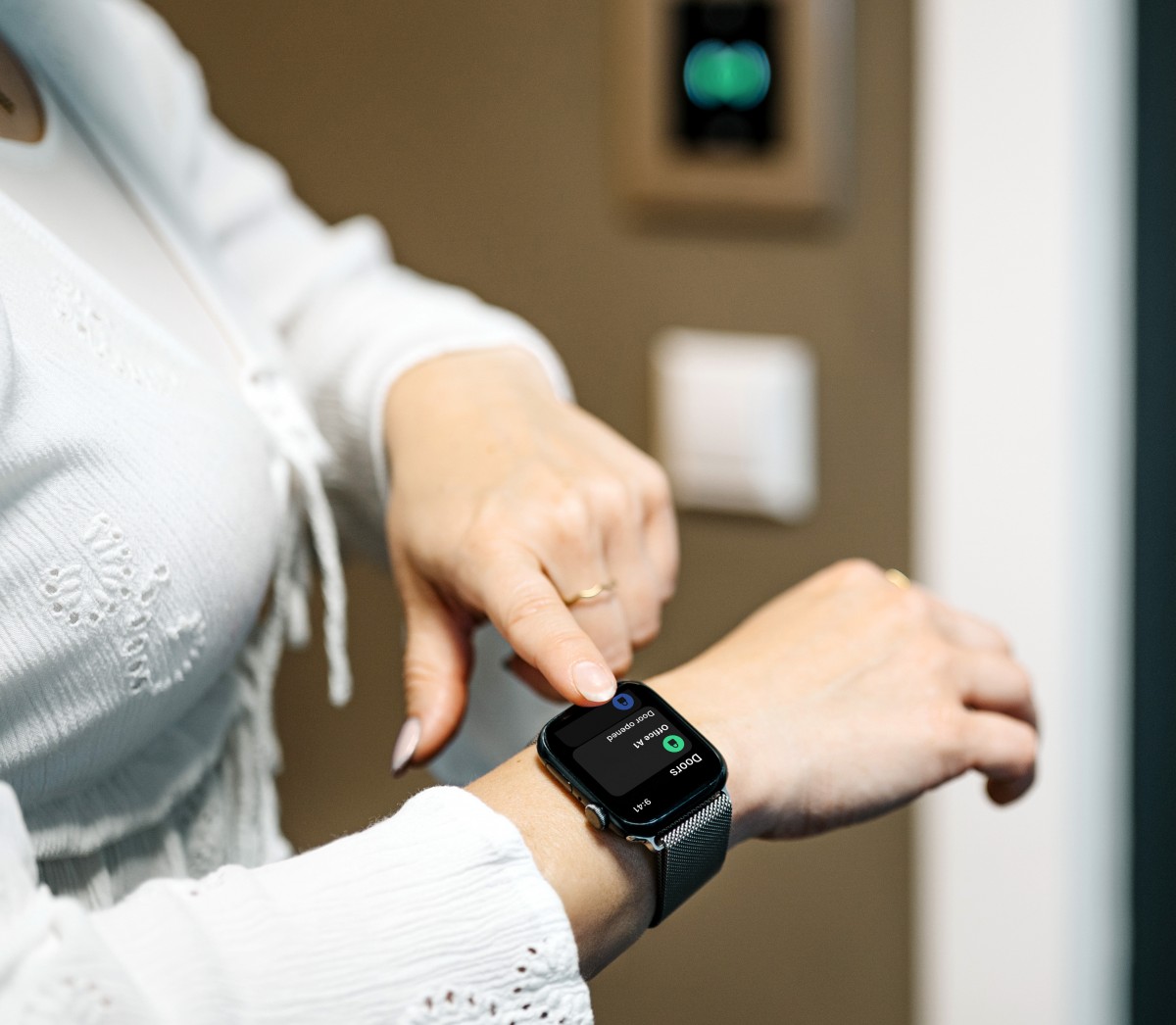
Access via Widgets: One Tap, Total Control
A standout feature of the My2N Apple Watch app is the use of widgets on the watch face. This allows users to unlock doors directly from the watch face, with just one tap.
There are two widget options available:
- Instantly unlock the nearest door
- Open the app to select a specific door
Whether entering an office building, residential lobby, or secure staff area, the My2N app ensures you can do so in seconds.
Ideal for Both Office and Residential Projects
The My2N Access Control App for Apple Watch is designed to enhance life in both commercial and residential environments. For residential users, it provides the ultimate in daily comfort and simplicity. For office environments, the advantages are equally strong. Employees can access secure areas quickly and conveniently, reducing delays and improving workflow efficiency.
Automatic Synchronisation: Always Up to Date
When a user installs the My2N access control app on their smartphone, the Apple Watch version automatically downloads as a companion app. All authorisation rights are regularly synced with the user’s mobile device, ensuring their watch always has the latest access information without manual intervention.
Built for Reliability and Security
Like every 2N solution, the My2N app for Apple Watch is backed by world-class reliability and security engineering. The app delivers an impressive 99.98% service reliability, ensuring users can count on it whenever and wherever they need access.
Technical Highlights
- Supported Watches: Apple Watch (Watch OS 11 and higher)
- App Type: Companion app (linked to My2N mobile app)
- Connectivity: Bluetooth only
- Supported Functions: Unlocking the door
- Unlocking Options: Tap in app, Touch mode, Complications (2 modes)
- Synchronisation: Automatic pairing of access rights
- Reliability: 99.98% service reliability
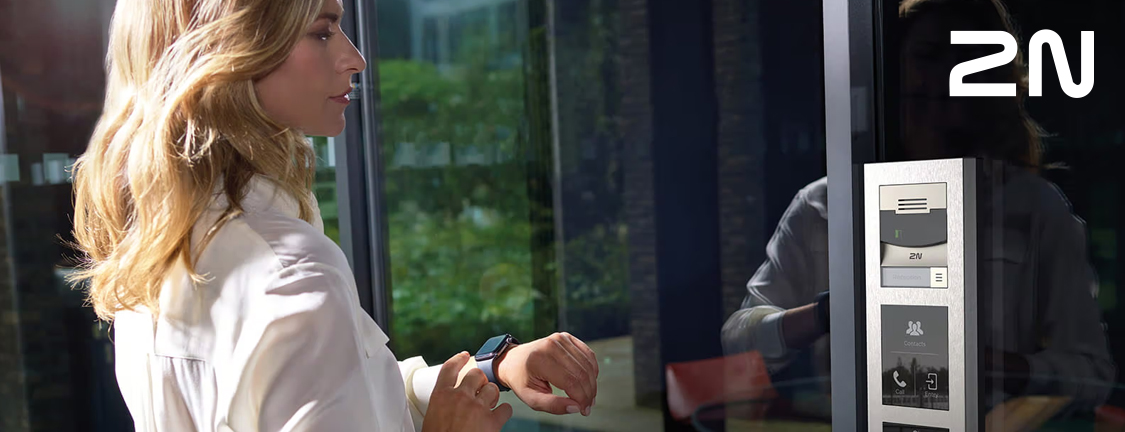
Integration and Ecosystem Compatibility
The My2N ecosystem integrates effortlessly with 2N IP intercoms, access control readers, and cloud-based management tools. This means that facility managers and integrators can add Apple Watch access as an extension of their existing installations with no need for hardware upgrades.
How It Works: Simple Steps to Smarter Access
- Install the My2N app on your iPhone and pair it with your Apple Watch.
- Synchronisation happens automatically.
- Approach a 2N-enabled reader near a door.
- Tap the complication to unlock.
- Enjoy quick, phone-free access.
The Perfect Fit for the Modern World
In today’s fast-paced environment, time, convenience, and security
are priceless. The My2N Apple Watch app aligns perfectly with the growing demand for frictionless access experiences across industries such as:
- Corporate offices and business parks – streamline employee access and improve flow.
- Residential developments – enhance tenant satisfaction and modernise amenities.
- Hospitality and co-living spaces – enable phone-free, secure guest access.
- Educational institutions – provide fast, secure access for staff and students.
- Healthcare facilities – support hygiene and efficiency with contactless control.
The Future of Access Control on Your Wrist
The My2N access control app for Apple Watch takes convenience, mobility, and security to a new level.
It enables instant, phone-free door unlocking, integrates seamlessly into the My2N ecosystem, and offers unbeatable reliability (99.98%) all through an elegant, intuitive Apple Watch interface.
Key benefits include:
- Unlock doors effortlessly with a single tap.
- Leave your phone behind, access anytime, anywhere.
- Ideal for residential and commercial environments.
- Automatic synchronisation for up-to-date permissions.
- Bluetooth-based security for reliable, offline operation.
Whether for property developers, facility managers, or everyday users, this app delivers an impressive blend of innovation, usability, and design, transforming the way we think about access control.
|
|
Featured Products
